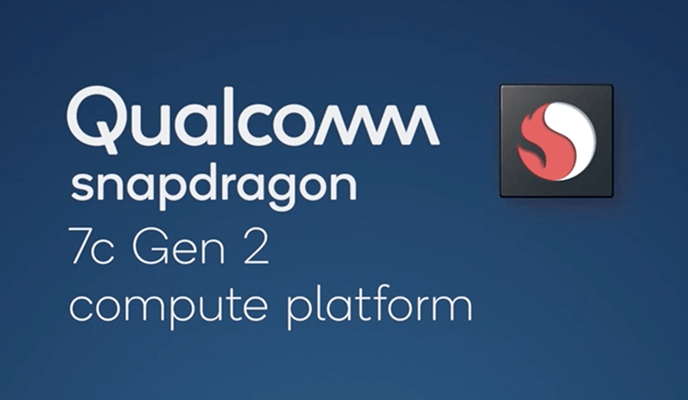Google to introduce Chromebooks for Cloud Gaming
It’s only been a few weeks since Google announced that its cloud gaming service Stadia will be discontinued next year. And now, the company has made a new cloud gaming announcement that it is launching Chromebooks made by various manufacturers that are optimized for cloud gaming.

To bring users marquee titles, Google has also partnered with cloud gaming services such as Nvidia GeForce Now, Microsoft Xbox Cloud Gaming, and Amazon Luna. Furthermore, Acer, Corsair, HyperX, Lenovo, and SteelSeries have collaborated with the company to create “Works with Chromebook” certified peripherals for these devices.
“Chromebooks have always been known for being fast, secure, and easy-to-use devices. Since their launch more than a decade ago, we have improved their capabilities and expanded the variety of devices for people to choose from,” the company said in a blog post.
“Today, we are taking that effort a step further by introducing the world’s first laptops built for cloud gaming along with our partners Acer, ASUS, and Lenovo,” it added.
Source: business-standard.com
Hardware specifications
This first generation of Chromebooks for cloud gaming from Acer, Asus, and Lenovo includes numerous gaming-related features. High-resolution displays with refresh rates of 120Hz or higher, Wi-Fi 6 or 6E compatibility, high-quality audio, and RGB keyboards with anti-ghosting are among them. Anti-ghosting is a feature that registers all the key presses accurately even when you press multiple keys at once.
The first set of devices is priced between $399 and $799 to appeal to a wider audience. These laptops use Intel processors ranging from Core i3 to Core i7, depending on the price. Here’s a quick rundown of the three launch models’ specifications.
Lenovo IdeaPad Gaming Chromebook
It sports a 16-inch display with a WQXGA screen (2560 X 1500), and a 120 Hz refresh rate and has a 12th Gen Intel Core i3/i5 processor and 8 GB RAM. There are two versions with storage of variations of 256 GB/512 GB SSD and 128 eMMC. It features 4 X 2W speakers with Waves Audi and supports 2 X 2 Intel Wi-Fi 6E, and Bluetooth 5. Lenovo IdeaPad Gaming Chromebook contains 2 USB 3.2 gen 2 type C ports, 1 X USB 3.2 Gen 1 type A, 1 X HDMI 2.0, 1 X audio combo jack, 1 microSD card reader, and a battery backup of 71 Wh.
Acer Chromebook 516 GE
Acer Chromebook 516 GE features a display of 16-inch WQXGA screen (2560 X 1500) with a 120 Hz refresh rate. It contains a 12th gen Intel Core i5 processor with 8 GB RAM and 256 GB SSD. It sports DTS audio with quad-force vibration cancellation stereo. Some other features are 2 X 2 Intel Wi-fi 6E, Bluetooth 5.2, 2 x USB 3.2 gen 2type C, 1 x USB 3.2 gen 2 type A, 1 x HDMI 2.1, 1x audio combo jack, 1 x Ethernet RJ-45 port and battery backup of 65 Wh.
Asus Chromebook Vibe CX55 Flip
Asus Chromebook Vibe CX55 Flip sports a 15.6-inch Full HD (1920 X 1080) IPS touchscreen with 144 Hz refresh rate, 11th Gen Intel Core i3/i5/i7. It is available in 128GB/256GB/512GB SSD. It sports 2X Harman/Kardon certified speakers. Other features are 2X2 Wi-Fi 6, Bluetooth 5, 2 x USB 3.2 gen 2 type C; 1 x USB 3.2 gen 1 type A; 1 x HDMI 2.0; 1x audio combo jack; 1 x microSD card reader and a battery backup of 57 Wh.
Google does not currently have a set of requirements or certification for Chromebooks for cloud gaming. So, we don’t know if future devices must meet certain specifications to be included in this initiative, but Google will prioritize future devices with high refresh rate screens and good Wi-Fi connectivity.
However, the company stated that GameBench independently tested all three launch devices to ensure they provide a consistent and smooth gaming experience at 120 frames per second with a latency of less than 85ms.
All of these devices will be available for purchase in October. Acer, Corsair, HyperX, Lenovo, and SteelSeries supported accessories including headsets, mice, and controllers.

I am a student pursuing my bachelor’s in information technology. I have a interest in writing so, I am working a freelance content writer because I enjoy writing. I also write poetries. I believe in the quote by anne frank “paper has more patience than person
